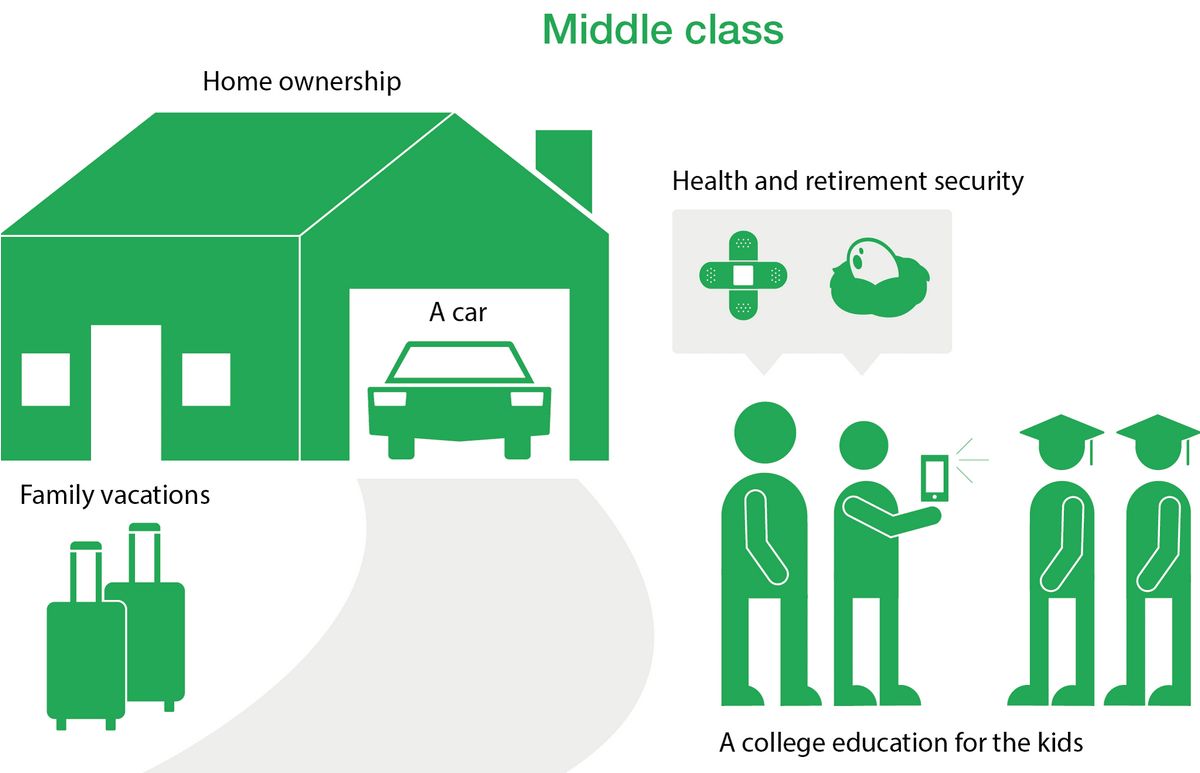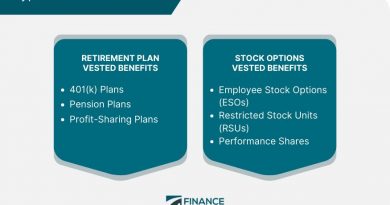Middle Class Definition and Characteristics

Contents
- 1 Middle Class: Definition and Characteristics
- 1.1 What Is the Middle Class?
- 1.2 Understanding the Term "Middle Class"
- 1.3 What Constitutes the Middle Class
- 1.4 Characteristics of the Middle Class
- 1.5 What Income Is Considered Middle Class?
- 1.6 How Large Is the Middle Class?
- 1.7 How Much Should the Average Middle-Class Person Save for Retirement?
- 1.8 The Bottom Line
Middle Class: Definition and Characteristics
What Is the Middle Class?
The middle class describes individuals and households who fall between the working class and the upper class in a socio-economic hierarchy. In Western cultures, the middle class tends to have a higher proportion of college degrees than the working class, more available income for consumption, and may own property. They are often employed as professionals, managers, and civil servants.
Key Takeaways
- The middle class falls between the working class and the upper class.
- The middle class constitutes about half of the U.S. population, but it has shrunk over nearly half a century.
- The middle class has enough disposable income for minor luxuries but relies on borrowing for big-ticket items.
Understanding the Term "Middle Class"
The term "middle" may suggest that the middle class earns within the middle of the income distribution, but this is not always the case. Middle-class families tend to own their own home (with a mortgage), own a car (with a loan or lease), send their kids to college (with student loans or scholarships), save for retirement, and have enough disposable income for dining out and vacations.
Karl Marx referred to the middle class as part of the bourgeoisie, or small business owners, in contrast to the working class known as the proletariat. The meaning of the term "middle class" has shifted over time, from rivaling nobles to the contemporary meaning closer to the upper-end working class.
Income inequality has led to the talk of a "disappearing middle class," benefiting the top 1% and increasing stratification.
50%
The percentage of Americans who belong to the middle class as of 2021, according to the Pew Research Center.
What Constitutes the Middle Class
The middle class emerged partly due to federal funding and support through programs like the G.I. Bill. These programs offered education funds and business startups for discharged veterans. Incentives and salary increases helped raise working-class citizens into the middle class.
The definition of the middle class based on income continues to change, influenced by regional income disparities and living costs. Different measurements set the middle class income range at $50,000 to $150,000, $42,000 to $125,000, or upper-income limits at $250,000.
A $20 Minimum Wage
If wages had kept pace with labor productivity since 1968, the minimum wage would now be over $21, according to the Center for Economic and Policy Research.
Characteristics of the Middle Class
The middle class includes individuals who earn a salary that supports owning a home in suburban or comparable neighborhoods, with discretionary income for entertainment, travel, and dining out. While assumed to have sufficient income for retirement savings, an increasing portion of the middle class lives paycheck to paycheck.
The middle class holds the belief that career advancement and salary upgrades can lead to higher economic strata. However, upward mobility has slowed compared to rising costs of goods and services.
What Income Is Considered Middle Class?
The Pew Research Center defines "middle class" as income ranging from two-thirds to double the median income. The exact income boundaries vary by family size and location due to differing living costs. For a three-person household, middle-class income ranges between $52,000 and $156,000 annually, as of 2020.
How Large Is the Middle Class?
About 50% of Americans were part of the middle class in 2021, a decline from 61% in 1971, according to the Pew Research Center.
How Much Should the Average Middle-Class Person Save for Retirement?
Many financial advisors recommend saving at least three times your annual income by your thirties. For a 35-year-old with a median income of $63,000, that means saving around $189,000.
The Bottom Line
The middle class sits between the working class and the wealthy. It constitutes about half of the U.S. population and consists mainly of individuals working in white-collar professions, small businesses, or skilled trades. However, the middle class has declined since the 1970s due to the loss of well-paid manufacturing jobs and increasing economic inequality.



